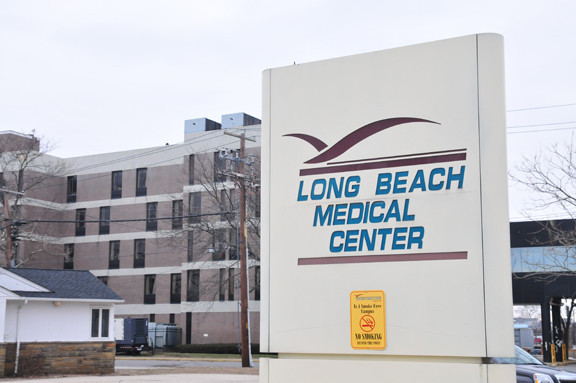Concerns over LBMC's closure persist
Admissions to E.R. are up, SNCH says
Ever since the Long Beach Medical Center closed after Hurricane Sandy — and amid ongoing discussions with the State Department of Health and merger talks with South Nassau Communities Hospital — admissions at SNCH have increased by about 120 per month, or 75 percent, since before the storm, while “treat and release” visits to its emergency room have increased by around 225 per month, or 86 percent.
“Because the 120 additional admissions a month were first seen in the [Emergency Department], the E.D. is averaging more than 300 visits per month as a result of the closing of LBMC,” SNCH spokesman Damian Becker said.
Billy Piazza, president of Local 287, the union representing the Long Beach Fire Department’s career firefighters, said that the department responds to roughly 3,500 emergency medical service calls per year. Now that ambulances must travel from Long Beach to either SNCH or Nassau University Medical Center, turnaround time for an ambulance — the time it takes to transport a patient to a hospital and then return to the city — can reach 90 minutes, Piazza said.
He said that the Fire Department now operates two ambulances regularly, though a third or fourth may be added at times depending on the number of personnel on duty or the time of year.
“There are a lot of factors that go into the turnaround time,” Piazza said. “One depends on how busy the hospital is — if you’re going by ambulance, it doesn’t mean you jump the line when you arrive there. The turnaround time used to be 40 minutes to an hour, but now that could be an hour and a half, depending on how busy the hospital is and traffic. Having the hospital open with a functioning E.R. is definitely a benefit.”
Ray Ellmer, who sits on Long Beach Medical Center’s Board of Trustees, spoke at the Nov. 19 City Council meeting about the need for a local hospital that could accept ambulances. “We are seeing in Long Beach that children and adults are dying in ambulances or dying shortly thereafter in emergency rooms because it takes … too much time to get over to South Nassau,” he said.
Piazza disagreed, saying that he does not believe any patients have died as a direct result of LBMC’s closure. “I don’t see the connection that more people are dying,” he said, adding that LBMC did not have a trauma unit. “Is the hospital’s closure a tremendous inconvenience? Yes. But I question the validity of that statement. [Patients] are being treated with the same exact medications [in the ambulance] that they would receive in the hospital.”






